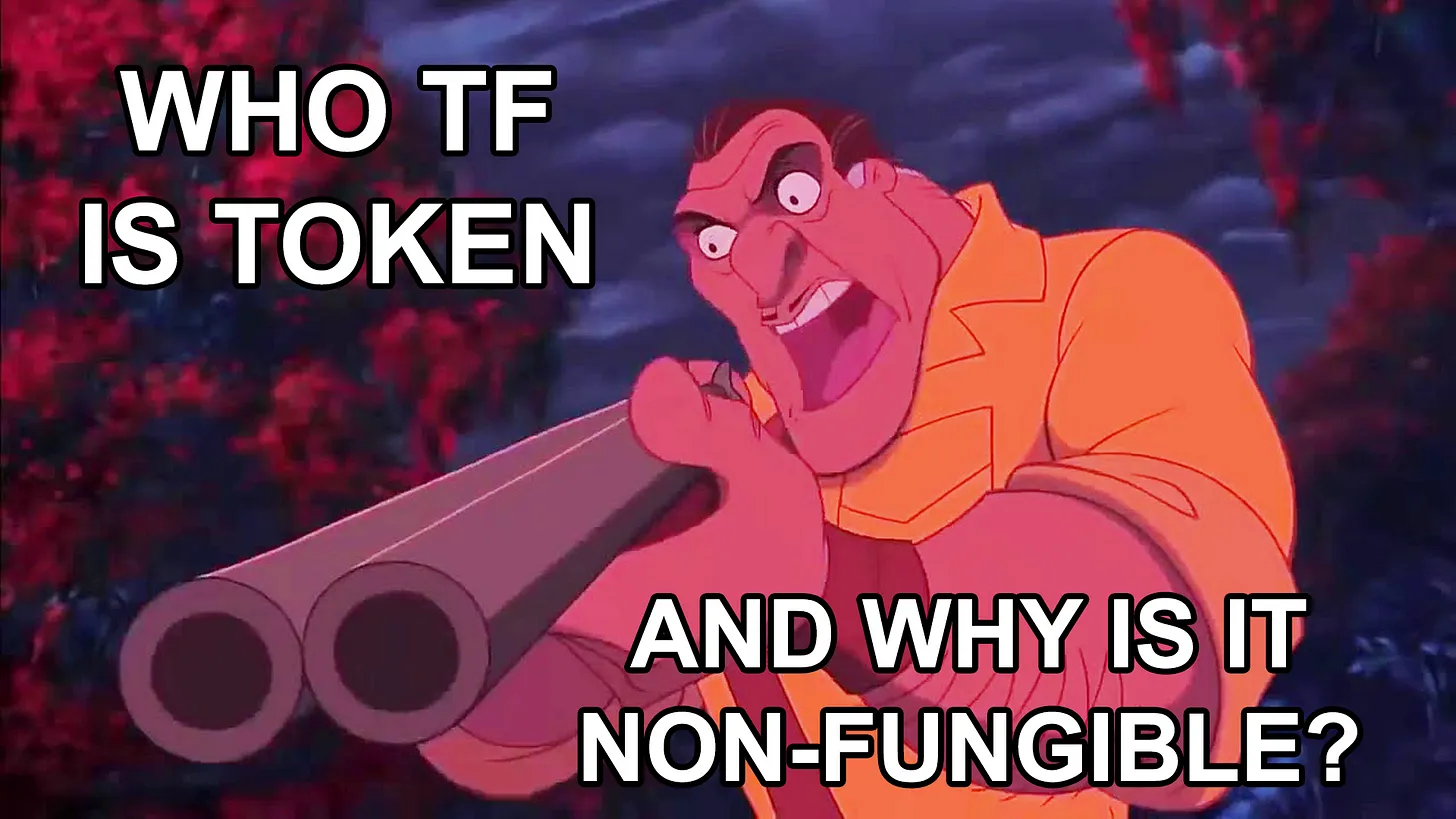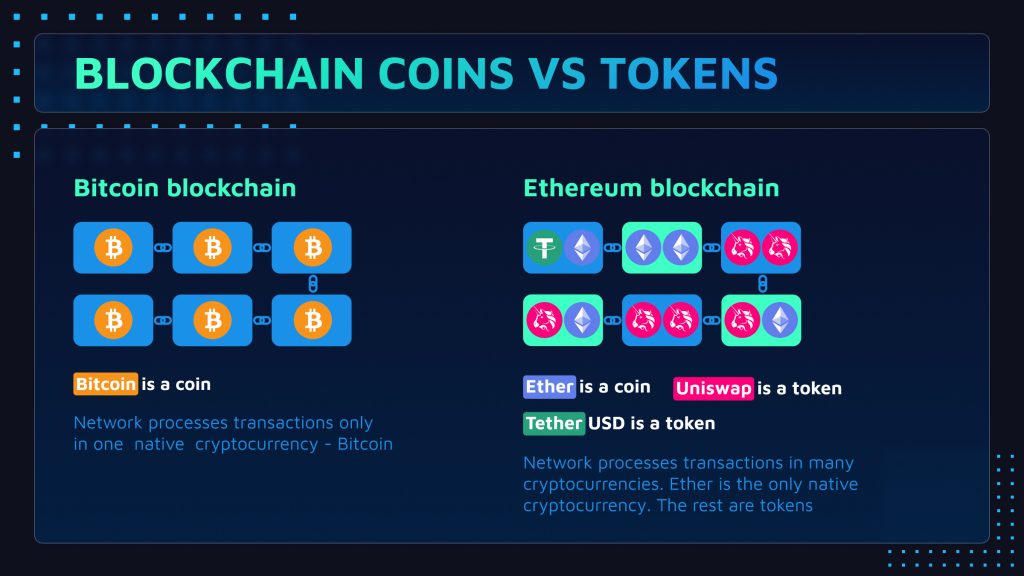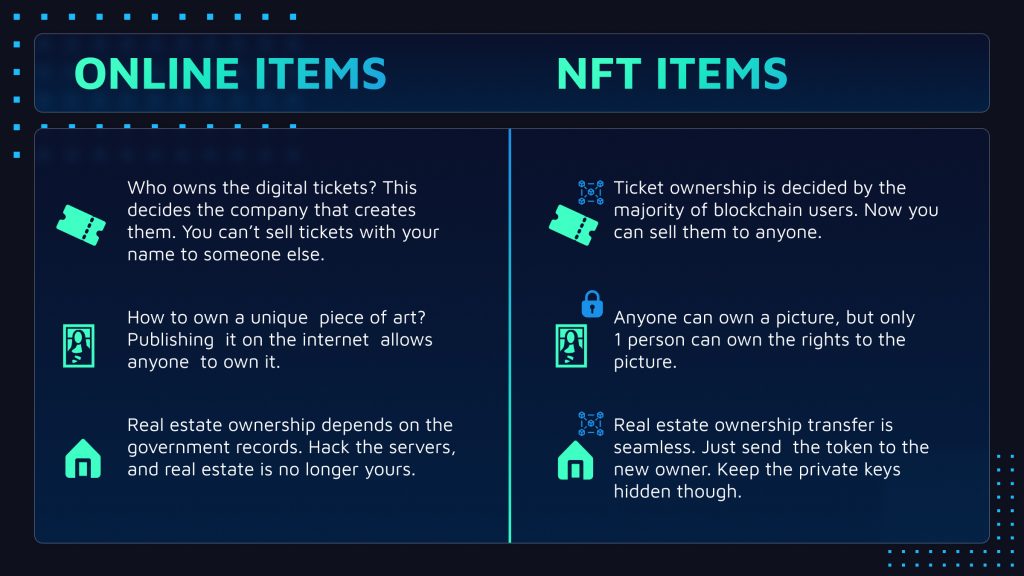This article was originally published on marketing-conversations.com
NFT definition
NFT is short for Non-Fungible Token. It’s a unique virtual asset located on the blockchain network, similar to cryptocurrency. It’s like owning a sword from a video game – you can’t touch it, but it’s there, online. And it’s yours.
What does non-fungible mean?
To grasp it, let’s start with fungible items. Imagine you’ve minted 5 gold coins with the same layout print. Each coin is identical to another. The coins can also be exchanged from 1 to 1. Since they are all copies, this makes them fungible.
Non-fungible is just the opposite. It’s when the item doesn’t have any copy in the world. This time, you’re minting 1000 different gold coins. Each coin would have a different print on its head or tail. Therefore, a unique coin is non-fungible.

Non-fungible things are all around us. Your fingerprint is unique, and your online username cannot be duplicated. That’s why they are non-fungible. But what about tokens?

Blockchain tokens
Tokens are just a type of cryptocurrency. If you’re familiar with blockchains, you know that blockchain is a network. Bitcoin network has only 1 currency running. But on other blockchains, things get a bit different.
Take Ethereum for example. It has a native coin called Ether, but it can house other coins too. These other coins are referred to as tokens.

Tokens use the same technology as cryptocurrency, but they are not necessarily money. Blockchain tokens are virtual objects but they can be valuable all the same.
A non-fungible token is technically a cryptocurrency that’s been created in a quantity of 1. Once it’s online on the blockchain, you cannot add more of the same unit, edit or delete it.
How do NFTs work technically
ERC721 – the original NFT standard
ERC721 is an Ethereum token standard that defines a set of rules for creating and managing non-fungible tokens (NFTs). These rules allow developers to create and manage NFTs on the Ethereum blockchain without having to build their own custom token standard.
The ERC721 standard defines a set of functions that must be included in an NFT contract, such as functions for transferring ownership and querying the NFT’s metadata. It also defines a set of events that must be triggered when certain actions are taken, such as when an NFT is transferred or when the ownership of an NFT is transferred.
The ERC721 standard also defines a set of rules for how an NFT should be represented on the blockchain. This includes defining the NFT’s token ID, its metadata (such as its name and description), and the address of its owner.
By adhering to the ERC721 standard, developers are able to create NFTs that are interoperable, meaning they can be used on different platforms and in different applications. This allows developers to create more powerful and sophisticated applications that use NFTs in creative ways.
ERC721 vs ERC1155
ERC721 and ERC1155 are both Ethereum token standards that are used to create and manage non-fungible tokens (NFTs). The key difference between the two is that ERC721 tokens are indivisible, meaning they cannot be split into smaller units, while ERC1155 tokens are divisible, meaning they can be split into smaller units.
ERC721 tokens are typically used for digital collectibles, such as trading cards, video game items, and artwork. These tokens are indivisible because each token is unique and cannot be broken down into smaller units.
ERC1155 tokens are typically used for fungible assets, such as digital tokens, currencies, and commodities. These tokens are divisible because they are interchangeable and can be subdivided into smaller units.
Both standards allow developers to create and manage NFTs on the Ethereum blockchain without having to build their own custom token standard.
How Does NFT work on Solana?
Solana is a blockchain platform that supports the development of non-fungible tokens (NFTs). NFTs are digital assets that are unique, meaning they cannot be replaced with other assets of the same type.
Solana’s NFT protocol is based on its own token standard called SOLNFT. This standard defines the rules for creating, managing, and transferring non-fungible tokens on the Solana blockchain.
SOLNFT is a token standard that is designed for interoperability and scalability. It allows developers to create and manage NFTs on the Solana blockchain without having to build their own custom token standard.
The SOLNFT standard defines a set of functions that must be included in an NFT contract, such as functions for transferring ownership and querying the NFT’s metadata. It also defines a set of events that must be triggered when certain actions are taken, such as when an NFT is transferred or when the ownership of an NFT is transferred.
The SOLNFT standard also defines a set of rules for how an NFT should be represented on the blockchain. This includes defining the NFT’s token ID, its metadata (such as its name and description), and the address of its owner.
By adhering to the SOLNFT standard, developers are able to create NFTs that are interoperable, meaning they can be used on different platforms and in different applications. This allows developers to create more powerful and sophisticated applications that use NFTs in creative ways.
NFT vulnerabilities
Although Non-Fungible Tokens (NFTs) are a great way to securely own unique digital assets, they are not immune to security vulnerabilities. As with any digital asset, it is important to be aware of the potential vulnerabilities associated with NFTs and take steps to ensure their security.
Some of the most common vulnerabilities associated with NFTs include:
- Smart contract bugs: Smart contracts are the code that is used to create and manage NFTs, and they can contain bugs that can lead to the loss of funds or other issues.
- Regulatory issues: NFTs are a relatively new asset class, and they are subject to changing regulations in different jurisdictions. It is important to stay up to date on the laws and regulations in the jurisdictions where you are using or trading NFTs.
- Phishing attacks: NFTs are often stored in wallets, and malicious actors can attempt to phish users for their wallet credentials. It is important to be aware of common phishing attacks and take steps to protect your wallet.
- Theft/Hacking: As with any digital asset, NFTs can be stolen or hacked if proper security measures are not taken. It is important to ensure that your wallet is secure and that you are using a secure blockchain platform.
By understanding the potential vulnerabilities associated with NFTs and taking steps to protect your NFTs, you can ensure their security and minimize the risk of loss.
Why bother with Blockchain if I can store items on the Internet?
It all comes down to ownership. When you buy a painting, you know it’s yours because you can touch and put it anywhere you want. If you buy an online painting, how can you tell no one else owns it too?
That’s where blockchain comes in. Blockchain is a network of computers that verify digital ownership. It’s this gigantic online ledger that records all the transactions between network users. Once you buy NFT, the ledger records your address as the sole owner of your NFT. Your NFT is the original, while the copied files are just that – copies.
NFTs create many opportunities. Artists can transfer ownership to art collectors. Companies can release trading cards for card collectors. Players can trade their video game items freely. NFTs can be used in many more ways.

NFT Types
Anything can be owned on the blockchain. All you need is a digital file and your blockchain wallet address.
Here’s a list of possible NFT types:
- Paintings
- Songs
- Videos
- Trading cards
- Video game items
- Virtual real-estate
- Real real-estate
- Cars
- ID cards
- Software licenses
- Social media posts
- Social media stickers
- Articles
- Tickets



